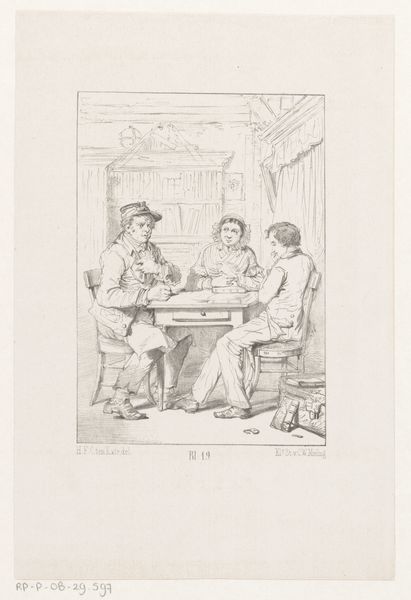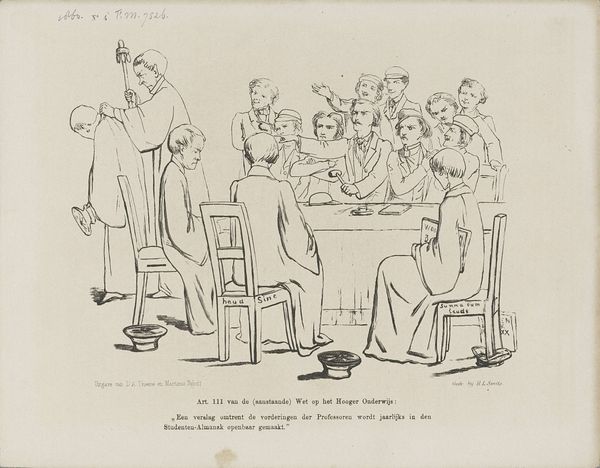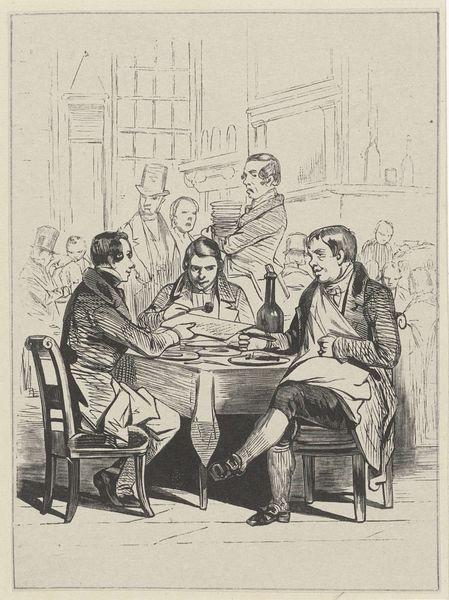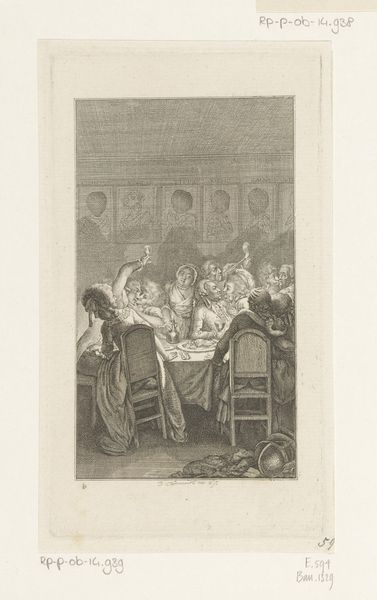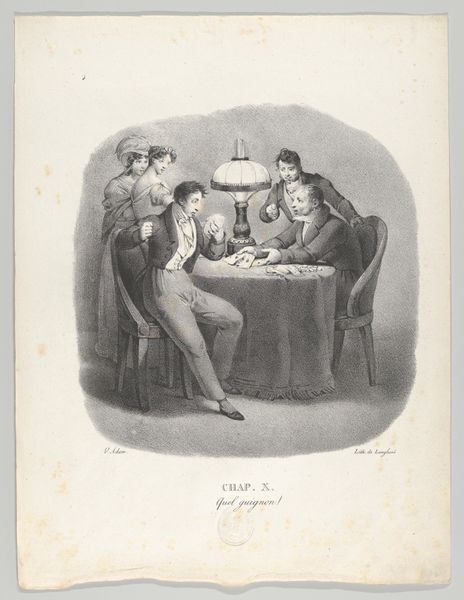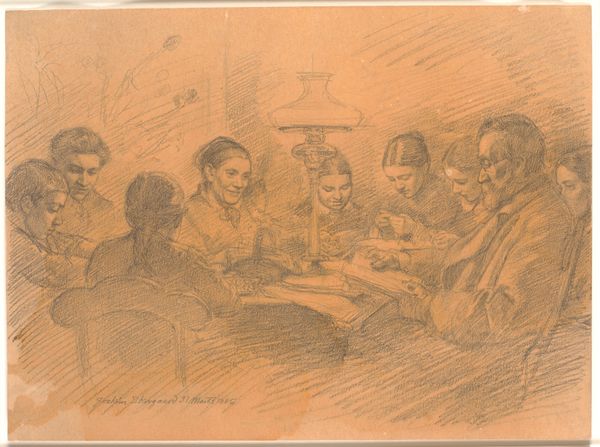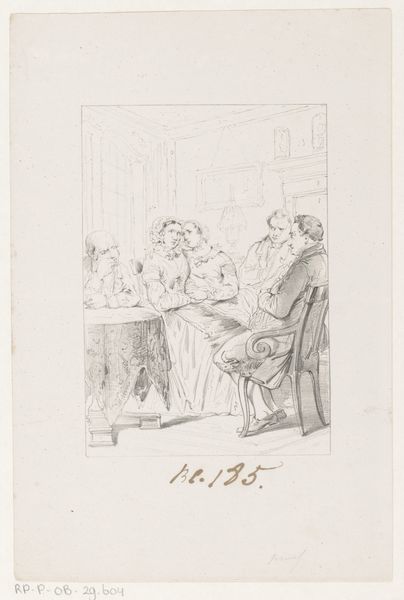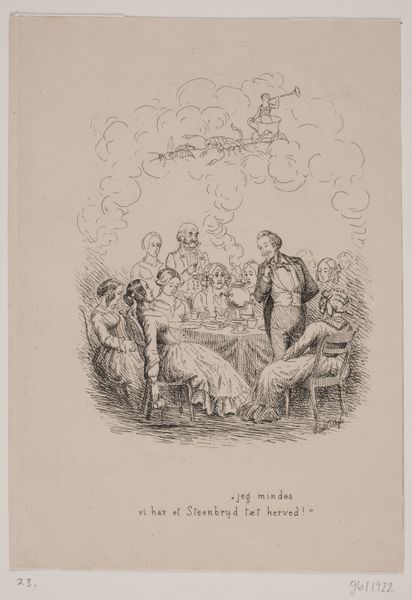
Dimensions: height 248 mm, width 165 mm
Copyright: Rijks Museum: Open Domain
Editor: This drawing, "Mannen rond een tafel," created sometime between 1832 and 1891 by Herman Frederik Carel ten Kate, is really intriguing. It's a pencil drawing showing a group of men seated around a table. It feels like a candid snapshot, even though it’s meticulously rendered. What stands out to you in this piece? Curator: What I find compelling is the representation of social dynamics through the very means of production. Ten Kate utilizes pencil, a relatively accessible material, to depict what seems to be a bourgeois gathering. It prompts me to think about who had access to these materials, who could afford leisure time, and how the image itself might have been circulated. Consider the labor involved, both Ten Kate's and perhaps the men around that table. What was their work? How is it valorized in this society? Editor: That's interesting – I hadn’t really considered the implications of using pencil as a material choice! I guess I was focusing more on it being a group portrait. Are you suggesting the artist is maybe commenting on class or social standing through this choice? Curator: Absolutely. Think about the contrast: pencil allows for a certain level of replication and accessibility – almost mass production in drawing form, even in the 19th century. Yet, the subject matter focuses on what appears to be a privileged scene. The labor of the artist to depict this and the context surrounding this scene are linked together through that conscious choice of such accessible material. What kind of consumption did scenes like this represent, or perhaps encourage, for the wider viewing public? Editor: So, seeing it through that lens makes me think differently about it. Instead of just a group portrait, it becomes more of a statement about access, labor, and social roles at that time. It goes beyond just *what* is depicted to *how* and *why*. Thank you. Curator: Exactly. Examining materiality allows us to peel back layers and consider art as an active participant in social and economic systems, not just a passive reflection. We should also ask why certain ‘genre scenes’ gained popularity at this moment.
Comments
No comments
Be the first to comment and join the conversation on the ultimate creative platform.
